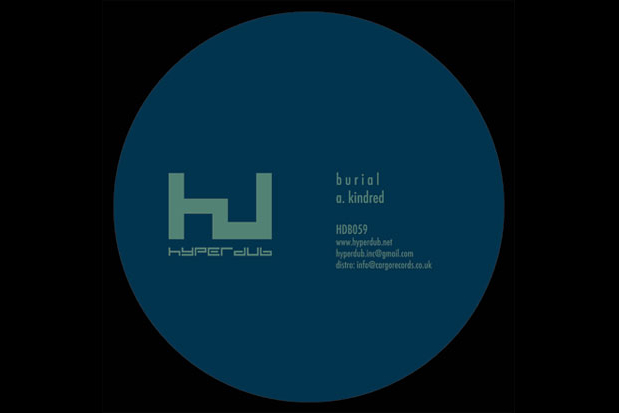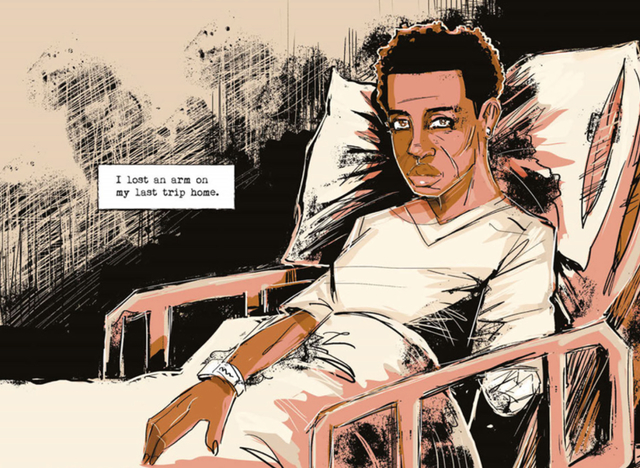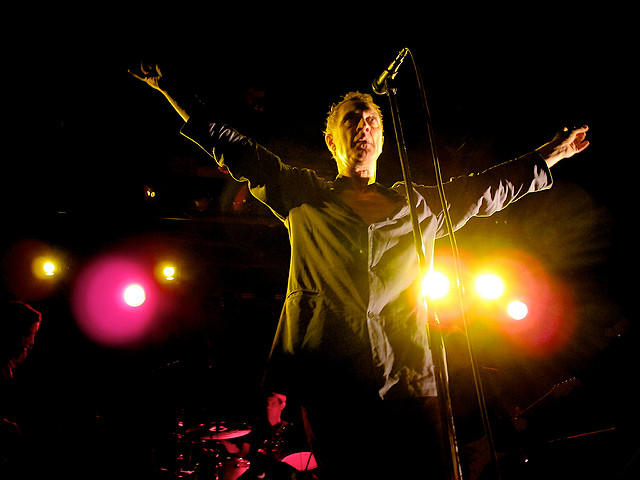It was two in the morning as I made my way up the hill. Halfway through my second listen to Burial’s new Kindred EP, the music had started to saturate me, like rain that has stopped searching for the fastest way to the sea. But the sounds were still new too new for me to trust my ears. Was this strange wail I was hearing a part of the recording that I’d missed the first time?
I fumbled for the volume control on my iPod Shuffle, but was still wearing the gloves I’d put on for my bike ride. So I reached for my headphones, pulling the right one down to my neck while the left stayed pressed to my ear. Even then, it took me a minute to confirm that the eerie sound I’d noticed was coming from outside. Then I remembered the startling sight from earlier that night, when I’d rounded the corner in our subdivision to see three coyotes ambling down the street.
In a sense, this experience taught me more about the staying power of Burial’s moody collages than years of diligent dub-stepping ever could have. Despite his indebtedness to the genre’s signature beat, he has never made music for the dance floor. As K-Punk (Mark Fisher‘s nom de plume) wrote in a brilliant response to Burial’s first album back in 2006, this deliberately anonymous artist “conjures audio-spectres out of crackle, foregrounding rather than repressing sound’s accidental materialities.”
If the club constitutes what Michel Foucault called a “heterotopia,” a place where the routines of everyday life are temporarily suspended, then Burial seems to conjure a time when this alternative realm will break free of its confines and start colonizing reality. But this revolutionary impulse is recast in the future perfect, as a melancholy retrospective on a future that is destined to have always already slipped through our grasp. For Fisher, the effect is “like walking into the abandoned spaces once carnivalized by raves and finding them returned to depopulated dereliction.”
Once I’d read this apt appraisal of Burial’s work, it became impossible for me to listen to his records innocently. Instead of just hearing them, I was always hearing them as an index of our common cultural predicament. And while the music bore up well under the burden of so much significance, I found myself too eager to treat each new release as further evidence to support an argument that had long since lost its elasticity.
Indeed, after a while it became difficult for me to hear anything new in Burial at all. That’s why I initially approached Kindred with trepidation. I wanted to restore the element of surprise to his music. So instead of sitting down at the computer to write up my first hearing, as I typically do, I decided to take the EP for a spin. Literally: I took off for a chilly bicycle ride on the empty streets near my house.
Had I been making my way through London, the sounds of the city would have infiltrated my listening: the hum of machinery, the whoosh of vehicles speeding past, the irregular beats made by feet on pavement. In short, the record would have sounded like the shadow of reality, an uneasy doubling of the “It is what it is” mindset.
In the semi-rural silences of my desert home, however, the effect was markedly different. Rather than doubling my surroundings, Kindred was in dialogue with them. Some sounds, like my bicycle’s tires coursing over gravel, closely matched elements in Burial’s repertoire. But others, like the coyotes’ wailing or the birds waiting impatiently for the dawn, were clearly out of place.
And yet they were so seamlessly integrated into the sonic flow that I had the sensation of listening to a remix of the EP, one specifically tailored to my location. That’s when the full beauty of Burial hit me for the first time. Because as compelling as it may be to picture ourselves walking through a post-apocalyptic “London after the rave,” as Fisher puts it, the truly radical move is not to transport us in this manner, but to make us more mindful of our immediate environment, wherever we reside.
By suffusing his soundscapes with the aura of retrospective melancholy, Burial turns awareness of the here-and-now into an out of body experience. We are distanced from our sensory input in order to be reminded just how little of it we have been registering consciously.
The clearest voice on Kindred comes from a film clip in which a character advises that, “There is something out there.” In a way, this is a perfect distillation of Burial’s art. He doesn’t just want to dissolve the walls between clubs and the streets beyond; he wants to help us transcend every divide between inside and outside. Despite all the noise-canceling technology in the world, sound will out. His mission is to open the door.





